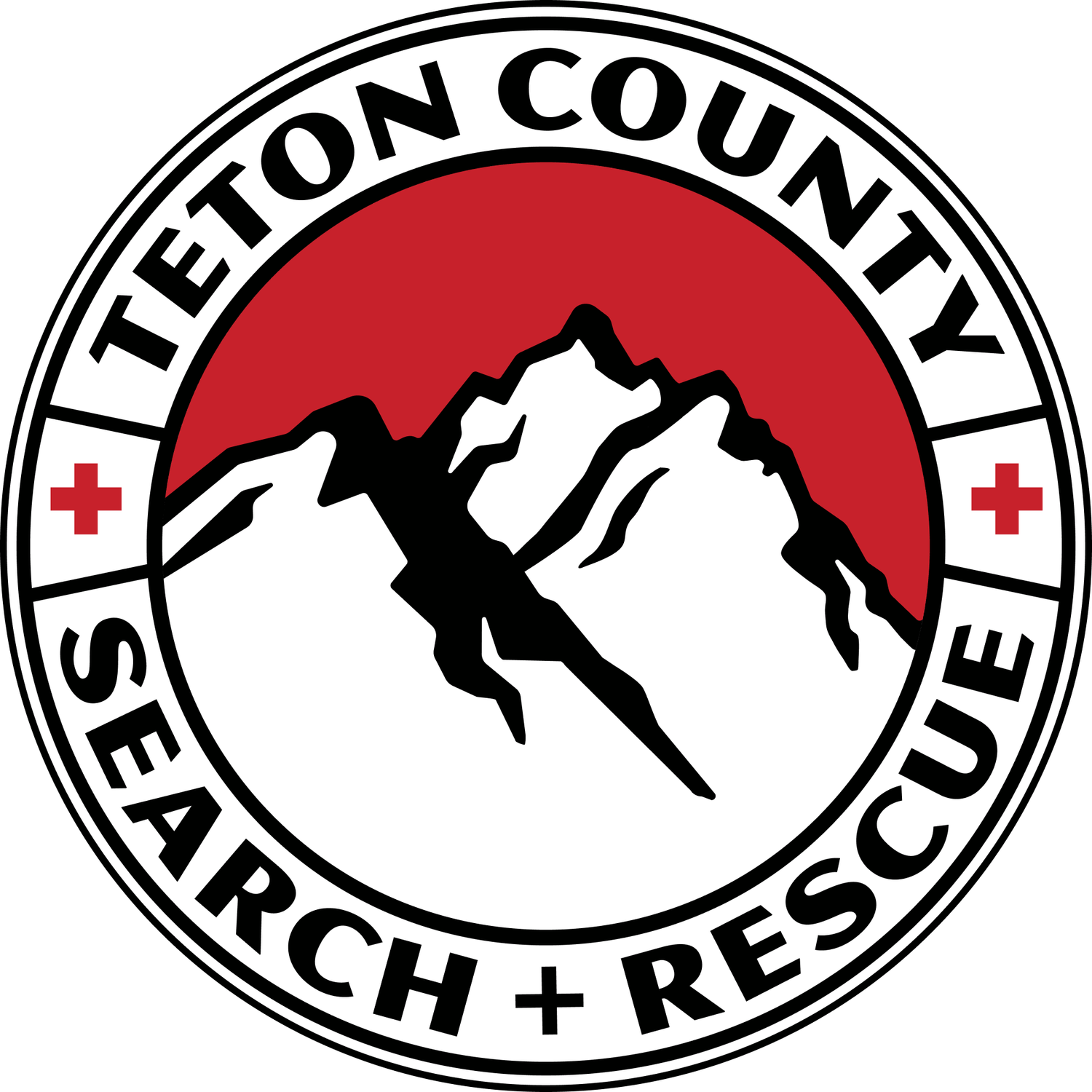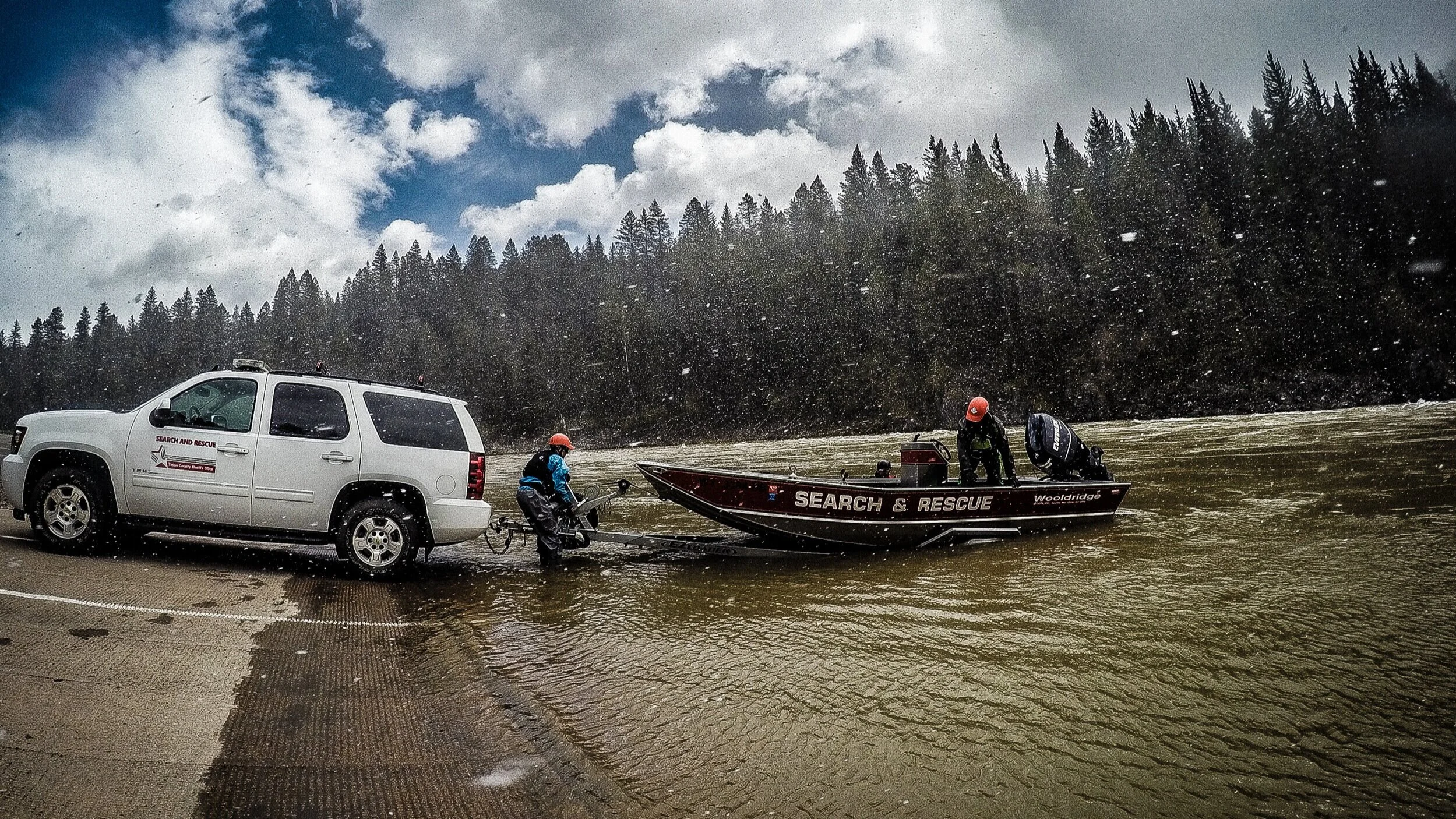Teton County Search & Rescue had one of its most eventful years ever in 2024. That’s according to the newly released 2024 End-of-Year Review and Rescue Report, which is published twice a year by Teton County Search & Rescue Foundation. The End-of-Year Rescue Report is notable because it documents the past six months of rescues, as well as a year’s worth of data about rescue demographics.
Cover image by Joey Sackett.
The 32-page report shows that with 130 calls for service between Dec. 1, 2023 and Nov. 30, 2024, TCSAR had its second highest call volume in the team’s 31-year history. Many of these calls were due to the arrival, in October 2023, of TCSAR’s new helicopter, which was called 31 times to conduct missions with the Jenny Lake Rangers in Grand Teton National Park.
In 2024, some of the most common locations for rescues included: Togwotee Pass; Caribou-Targhee National Forest on the west side of the Tetons; the Jackson Hole Mountain Resort backcountry; and the Gros Ventre Mountains. Those ages 16-30 issued the most rescue calls, with 38 percent, while local and regional backcountry users accounted for 43 percent of all calls.
In 2024, TCSAR’s helicopter was used more than 60 times. Photo: TCSAR
The report shows that the TCSAR’s 38 volunteers dedicated a collective 10,827 hours back to the community in the form of rescues, training, and community events.
TCSAR Chief Advisor Cody Lockhart explains that the volunteers accomplish what they do thanks to an unwavering commitment to teamwork.
“Within our Team, there is a culture of finding where you can be the most helpful and then proudly filling that role,” Lockhart writes in the report’s Intro Letter. “It is not about being a hero or an all-star—it is about being the best teammate possible. It is not about getting credit for the job—it is about making sure the job gets done.”
Other key takeaways from the report include:
The TCSAR helicopter program, in its first year of operation, completed more than 60 missions, demonstrating how invaluable this tool has become during a time when backcountry recreation shows no signs of slowing down.
The report includes 21 rescue summaries from the summer in Grand Teton National Park, during which Jenny Lake Rangers executed rescue missions with TCSAR’s helicopter and pilot. These summaries are intended to help educate the public about the partnership between the Jenny Lake Rangers and TCSAR, and how the county’s heli resource is being used.
TCSAR will take on a new class of volunteers in 2025.
A strategic plan outlining the goals and initiatives for TCSAR and the Foundation, including hosting the International Commission for Alpine Rescue in October 2025, and prioritizing programming from the Foundation’s education and outreach efforts through Backcountry Zero.
Rescue Reports are free and can be found at a number of participating businesses in Jackson Hole. If you’d like to be on our mailing list, please send an email to info@tetoncountysar.org. Digital versions are available for download at the TCSAR website.






